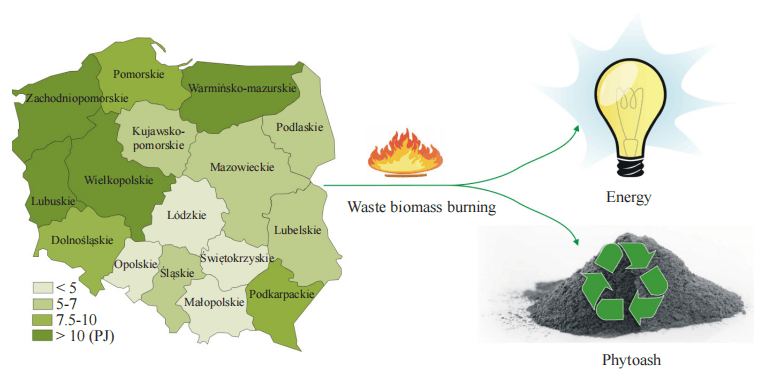Management of Waste Wood in the Energy and Fertilizer Industries. Case Study of Poland
Keywords:
biomass, phytoash, fertilizer industry, food industry, renewable energy, PolandAbstract
The energy transition requires the provision of stable energy production, which can be ensured by the production of energy from waste biomass. Physicochemical analysis was carried out and the heat of combustion was determined for 11 different tree species. The moisture content of the biomass was within wide limits: from 9.41% for elderberry to 43.92% for sweet cherries. In turn, the ash content ranged from 0.77% for pine to 3.58% for elderberry. The lowest heat of combustion was found for oak biomass: 18.82 MJ/kg, and the highest for pine: 21.23 MJ/kg. A fertilizer called phytoash obtained from biomass combustion contains large amounts of fertilizing calcium and magnesium and has an alkaline reaction. Phytoash can be used as fertilizer in the fertilizer industry on acidic soils in Poland. The largest amounts of calcium and magnesium for fertilizer purposes can be used in the Zachodniopomorskie Voivodeship (2,023 Mg/year and 2.86 Mg/year), the Warmińsko-Mazurskie Voivodeship (1,625 Mg/year and 2.30 Mg/year), and the Wielkopolskie Voivodeship (1,612 Mg/year and 2.29 Mg/year) and Lubuskie Voivodeship (1,609 Mg/year and 2.28 Mg/year). Calculations indicate a fairly large energy potential from waste biomass, which allows its use in the energy mix or industry, e.g. food, in Poland. The calculated amount of electricity from waste biomass would cover Poland's needs by 6% and heat by 20%.
Downloads
Published
How to Cite
Issue
Section
License
Copyright (c) 2024 Bartłomiej Igliński, Urszula Kiełkowska, Grzegorz Piechota

This work is licensed under a Creative Commons Attribution 4.0 International License.

